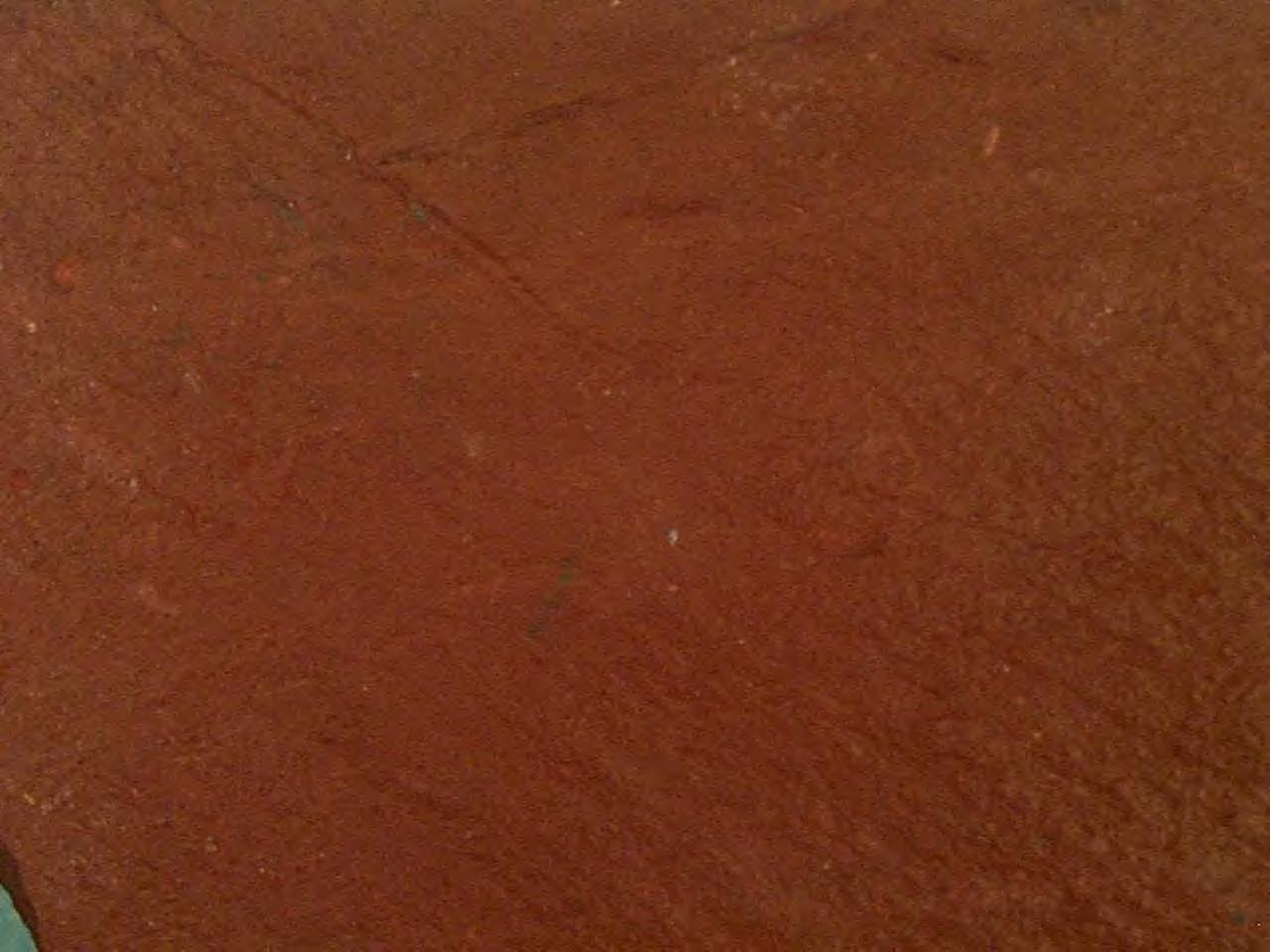Slate is a fine-grained, foliated, homogeneous metamorphic rock derived from an original shale-type sedimentary rock composed of clay or volcanic ash through low-grade regional metamorphism. The result is a foliated rock in which the foliation may not correspond to the original sedimentary layering. When expertly cut by striking with a specialized tool in the quarry, many slates will form smooth flat sheets of stone which have long been used for roofing and floor tiles and other purposes. Slate is frequently grey in color, especially when seen in masse covering roofs. However, slate occurs in a variety of colors even from a single locality. Slate can be found in many shades of grey, from light to dark, as well as purple, green or reddish brown. Slate is not to be confused with shale, from which it may be formed, or schist. The word "slate" is also used to describe products made from slate. It may mean a single roofing slate, or a writing slate for example. Before the mid-19th century, the terms slate, shale and schist were not sharply distinguished. In the context of underground coal mining, the term slate was commonly used to refer to shale well into the 20th century. Slate is mainly composed of quartz and muscovite or illite, often with biotite, chlorite, hematite, and pyrite and, less frequently, apatite, graphite, kaolin, magnetite, tourmaline, or zircon as well as feldspar. Occasionally ferrous reduction spheres form around iron nuclei, leaving a light green spotted texture. These spheres are sometimes deformed by a subsequent applied stress field to ovoids, which appear as ellipses when intersected by a cleavage plane.

